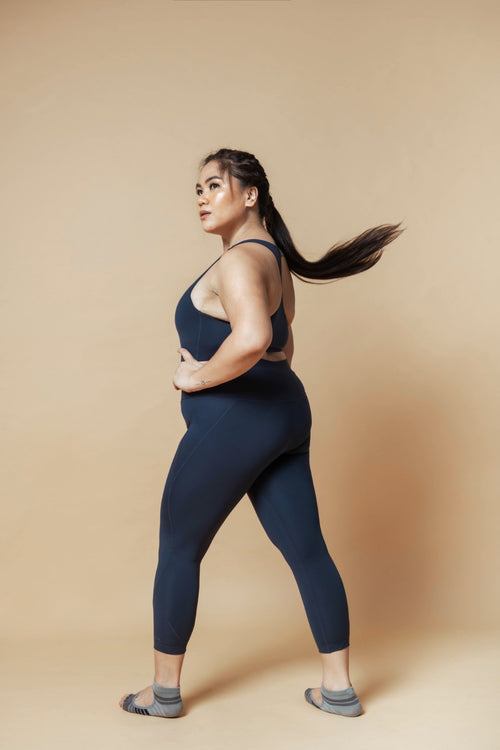Hello! We're Kin + Ally and we're so happy you're here!
Sustainability without compromise. Our goal is to create beautiful and lasting clothing pieces that will not only elevate our closets, but also our home: Earth. We want to create fashion that’s kind to the planet. We just want better for our family and friends, our kin and allies.
And that’s why we’re not taking no for an answer. We are not compromising on quality, and we are certainly not compromising on the environmental effects. In every step of creating our products, we have ensured to offset the bad with a whole lot of good. Our materials, our facilities, and our labor have all been considered with care. We may be a fashion company, but we’re not all about the looks.
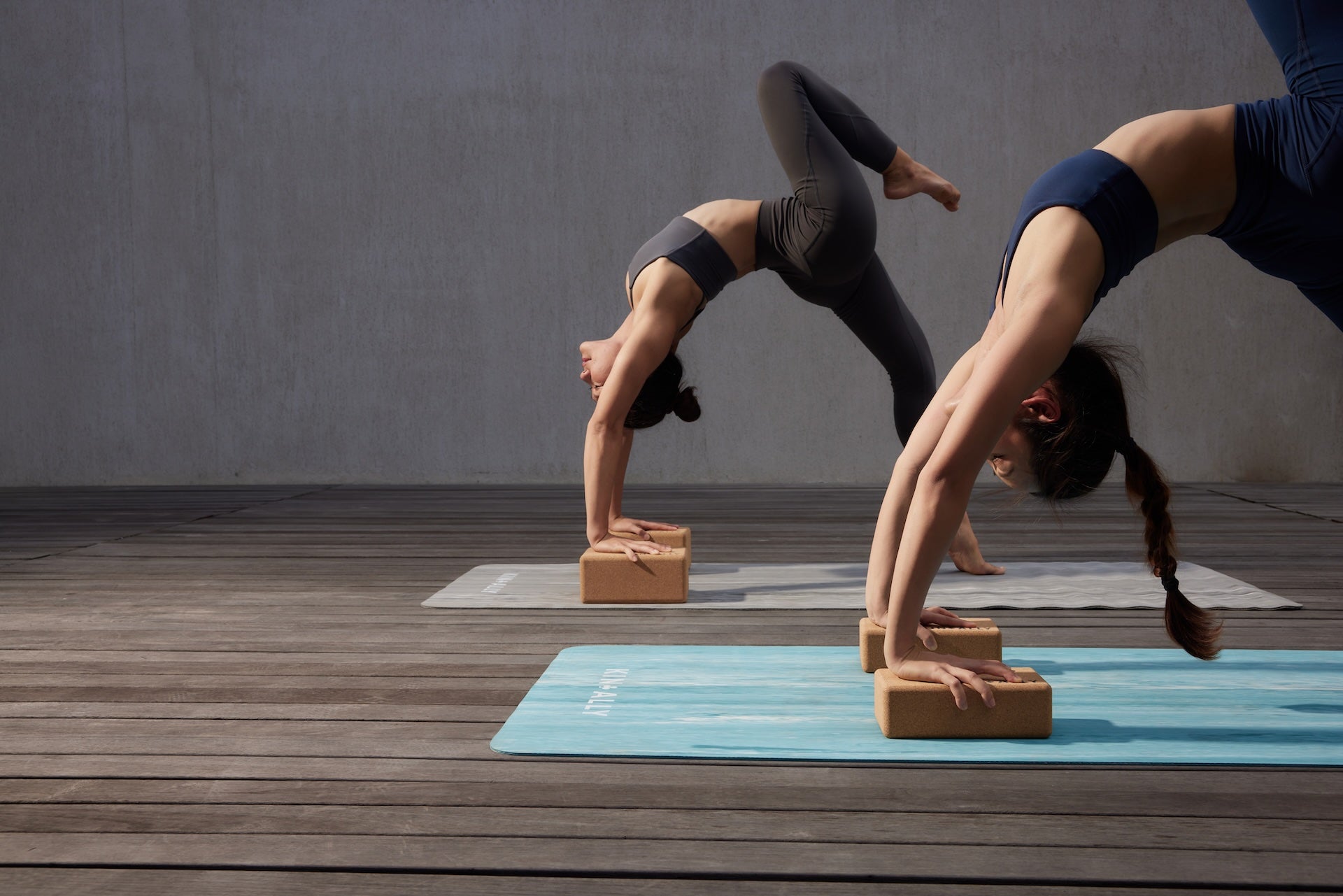
Are all your stuff really eco-friendly?
We love your curiosity! Here, take a look at the following breakdown, so you know what they're really made of - if you're like us and into this sort of thing.
ActiveKnit Leggings & Bras
Made from 79% recycled polyester (old water bottles!) + 21% spandex. That's 15 recycled old water bottles per legging and 10 per bra. Cool.
Hang Tags
Our hang tags are made of biodegradable and recyclable raw plant-based fiber (hint: natural paper!).
Handy Wash Bag
Multipurpose and totally reusable, our wash bag is made with, guess what: the same old water bottles as our leggings and bras! Use it to laundry and make your favorite leggings last for years, or use it to store your stinky clothes post-gym (or your bras and undies when traveling). You choose.
Packaging
100% reusable and recyclable. Don't toss it too quickly!
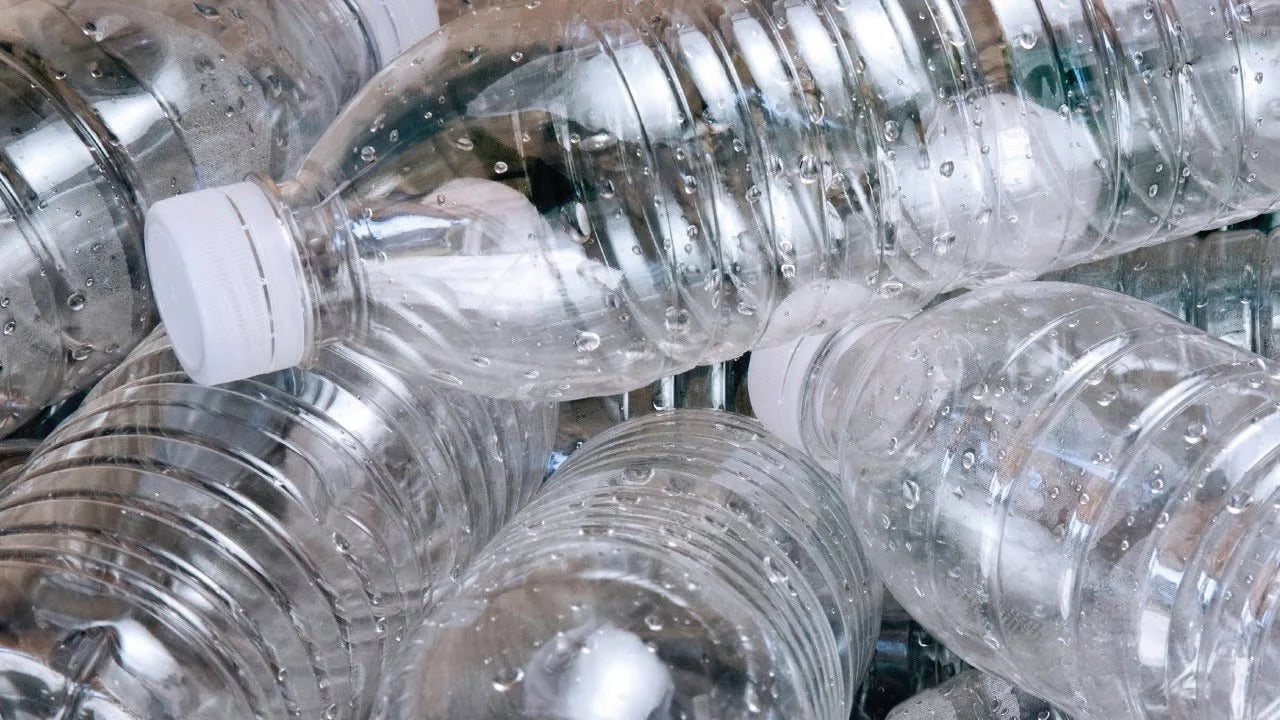
Wait, how do you go from water bottles to fabric?
Honestly, we still can’t believe the answer sometimes. The process seems more like a transfiguration spell out of Harry Potter than real-life recycling. Either way, this is how the magic happens.
So it starts with plastic bottles of water that you buy and use from the store. Lots of it. Usually, after you’ve drunk your water and throw the bottle in the trash, it ends up in landfills and oceans. And like a rude guest, it overstays its welcome and never goes away. So instead of asking it to leave for the thousandth time, we decided to invite plastic to a new home… our bras and leggings!
Every day, regular people like you and me in Taiwan put used and empty water bottles into designated recycling bins around the city that are collected and transported to our Taiwan recycling facility. We carefully peel off the labels from the 100% post-consumer water bottles, crush them (with love) into super tiny gravel-sized pieces, and give them a nice long bath until they shine like a diamond. Then, we say a spell that sounds like “polymerization” and the plastic chips get melted to fuse together and eventually transformed into a soft yarn that we use to make clothes! Watch the magic happen here.
The entire process takes a lot of time and care. Slow (fashion) but steady wins the race.

We're dye-ing to know about your coloring process!
After the fabric is done, it’s time to do some coloring! As fun as that sounds, this part of the process isn’t free from scrutiny, either. Often, when textile factories dye their fabric, they opt for non-eco-friendly dyes because they are cheaper. We get it, they want to have higher profit margins for their products. Anybody who went to business school would say that’s the ultimate goal. But the only thing we’re economical about is the resources we use, not the profits we get.
Creating beautiful fashion pieces doesn’t have to hurt the environment and its citizens. We refuse to accept that as the standard because we’ve seen firsthand how to make quality clothing without hurting Mother Nature. We are not choosing one or the other. Actually, we’d like to have our cake and eat it too, please and thank you.
Our eco-friendly dyes are certified as chemically safe by bluesign®. Not only do we use chemically safe dyes that are not destructive to the environment, we also treat the wastewater from the dyes until the water is clean again. The water quality is checked by the Taiwanese EPA to ensure that it is safe to be released back into the waterways so it can be reused again by the community. Our mommas always told us to leave a place cleaner than how we found it, and we really take that to heart.
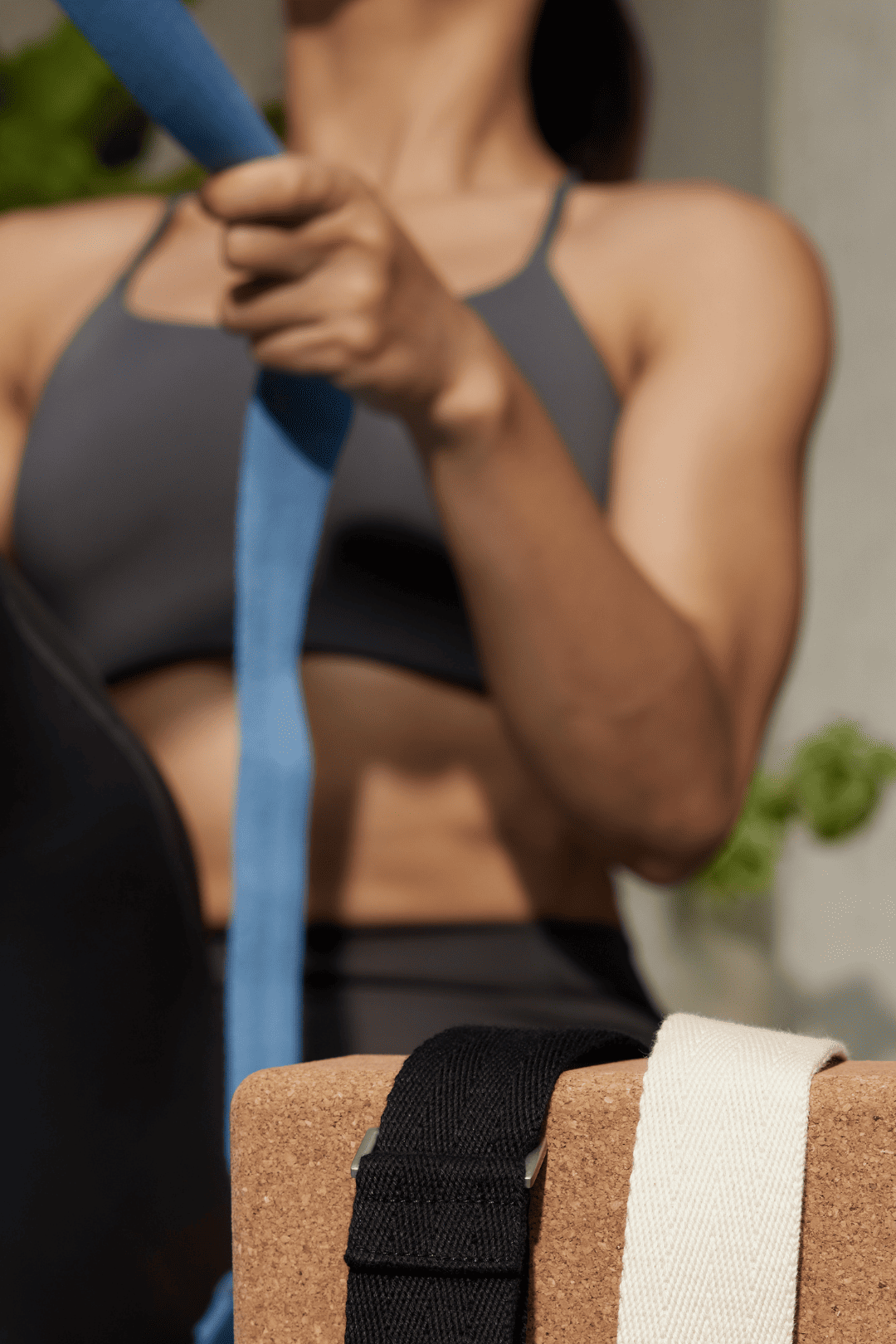
Where do you make your clothes?
Okay, here's something you'll want to know — something we're very proud of. A pioneer in the sustainability movement and totally ahead of its time, our Taiwan facility was the first company in Taiwan to receive the Global Recycled Standard (GRS) certificate over a decade ago when no one else knew what that was. They specialize in quality sustainable fabrics and are an expert at turning used plastic bottles into brand new *recycled* fabrics.
These fabrics then make their way to our beloved country Indonesia, to be cut and sewn into your leggings in our SA8000®, ethically certified facility in Jakarta, carefully chosen for their superior craftsmanship, values and ethics. We're so proud to partner with them — they make high-end knits for some of the world's most popular sports and outdoor clothing brands. Best of all, being SA8000®-certified means you can be sure that our workers are guaranteed fair wages and safe working conditions.
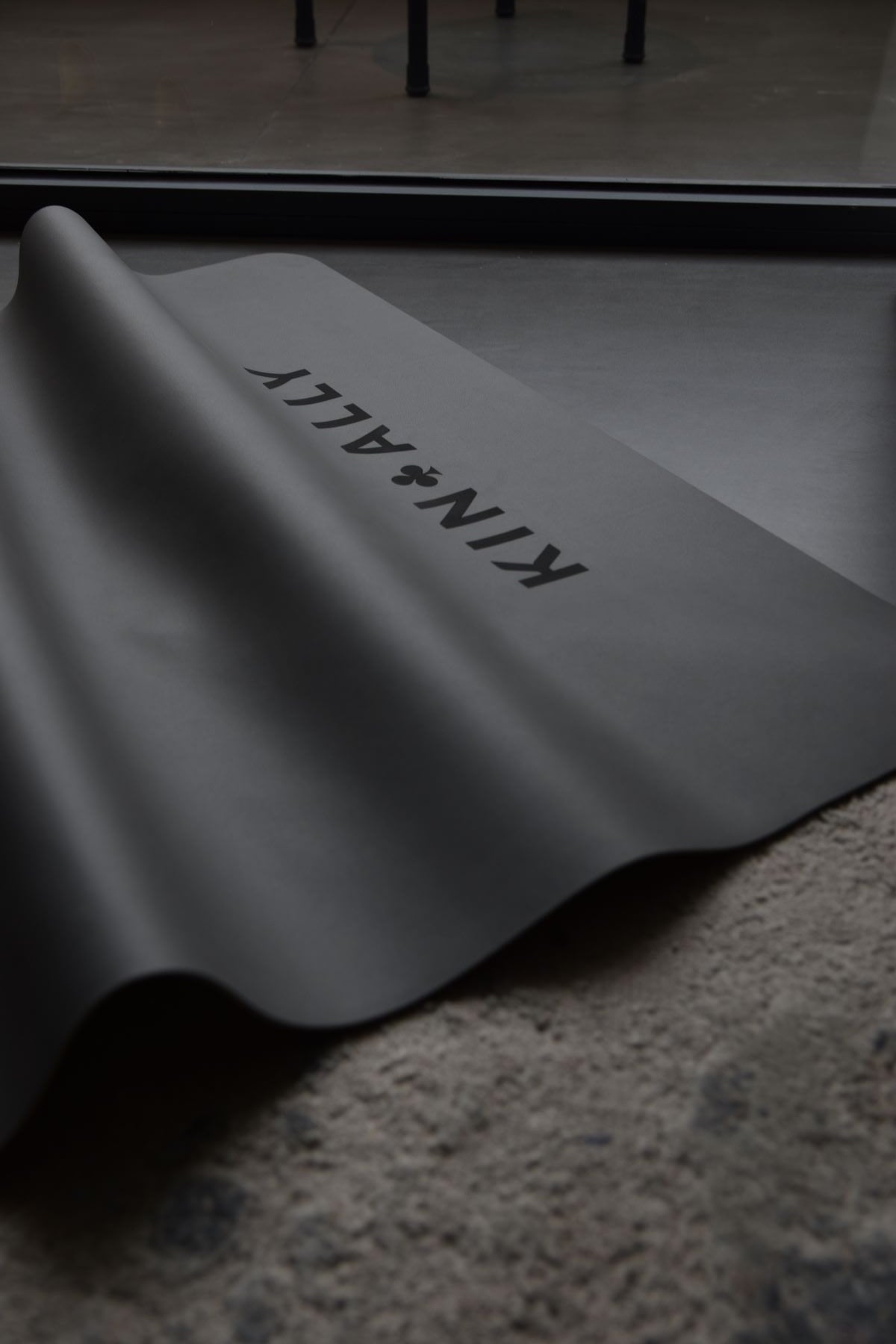
Why Taiwan and Indonesia?
When it comes to taking care of the environment, we aspire to be like Taiwan. It has one of the world's most efficient recycling systems, so despite having been known as "Garbage Island", it now has a recycling rate of 55%. Even the U.S. tops at 35%, and let's not forget our own nation of Indonesia where only a mere 10% of plastic waste gets recycled. We flew over and visited our eco-certified Taiwan facility, and we swiped right immediately. It was a match made in sustainability heaven, and we are so in love.
So what about Indonesia? You may not know it, but our country manufactures high-performance activewears for many of the world's best brands. In fact, we’re so confident of this that we know with 100% certainty you’ll find at least 2-3 pieces of activewear in your closet right now with a “Made in Indonesia” label. Go ahead, we’ll wait.
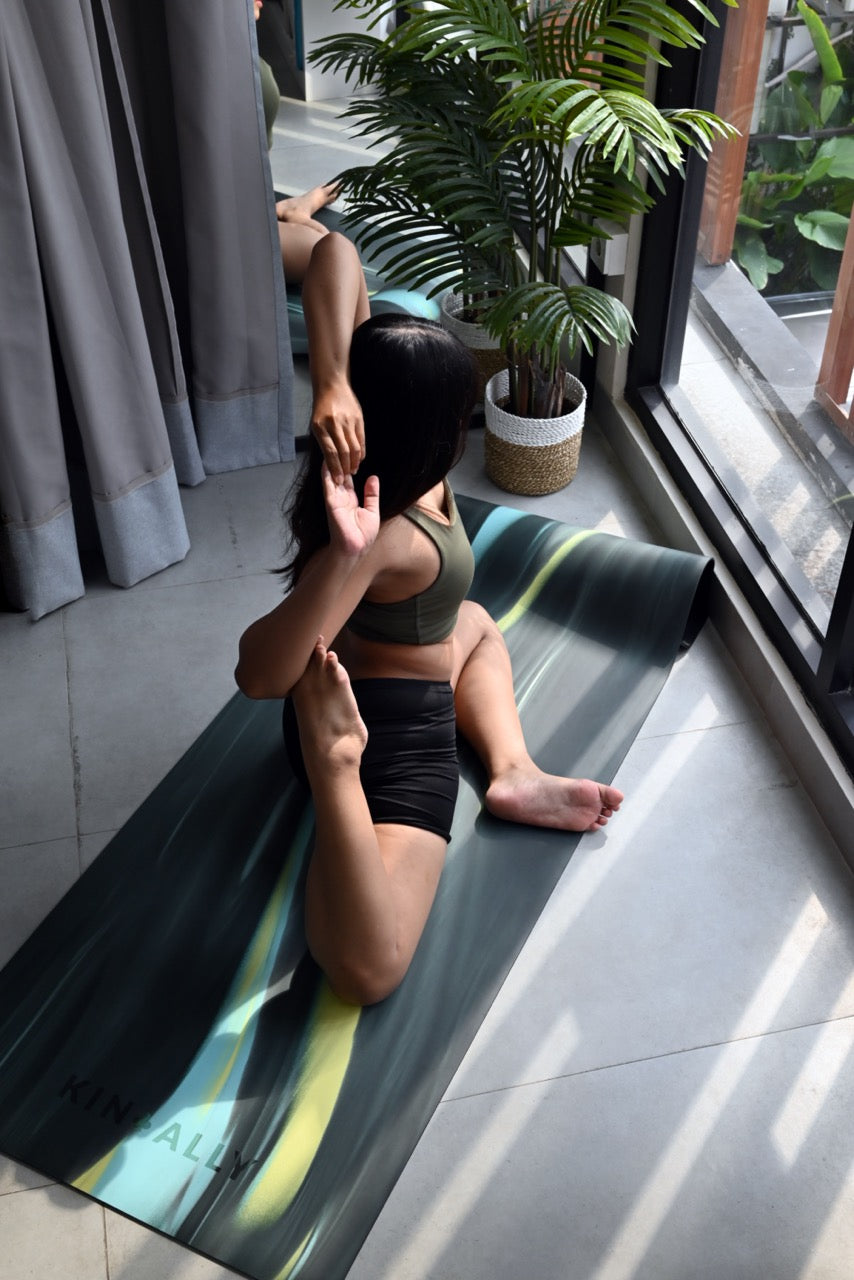
What are OEKO-TEX®, bluesign®, Global Recycled Standard (GRS) and SA8000®?
If you're an athleisure connoisseur, you most likely think about the performance of the different materials used to make your leggings. Breathable, compressive, stretchy — it all matters. But have you once thought about the materials' *impact* on the health of the planet, the workers and you?
Choosing something made with one of the above-certified materials is one way to ensure that your new purchase took painstaking steps to make sure it's good for you and good for the planet.
OEKO-TEX® is one of the world's best-known certifications that tests for harmful substances, from yarns to the finished product. Our recycled fabrics made the list! This means no harmful chemicals are used in the production of your leggings and bras.
bluesign® monitors every step in the supply chain, from chemical formulation to finished product. Their system features the world's strictest chemical safety requirements for textiles. Our dyes are bluesign®-certified. Ooh yes, we're very proud of this.
Global Recycled Standard (GRS) is intended to verify the recycled content of a product and responsible social, environmental and chemical practices in the production.
SA8000® is the leading social certification standard for factories and organizations across the globe. Our Indonesian factory is SA8000®-certified, which means they're dedicated to the fair treatment of their workers.
Hold up, how do I know you’re telling the truth about using recycled materials?
We don't want to claim we're using recycled stuff if we can't prove it to you, so we're sharing all our certifications here.
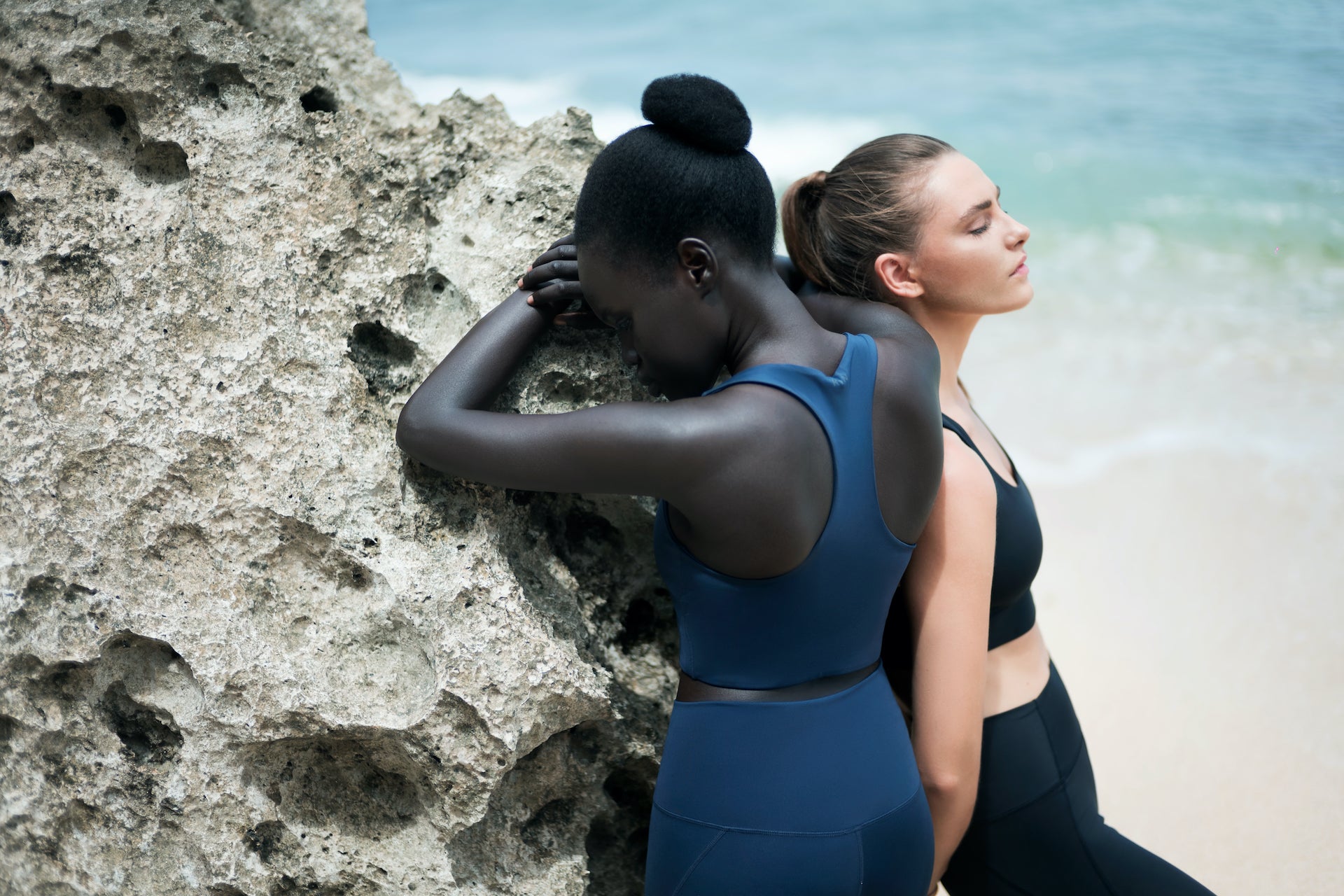
How do we know that you're only recycling existing waste?
The key words here are: Existing waste. Keep those in mind when you read this.
Ok so back to the love of our lives, the Taiwan facility that makes all our dreams come true. The facility is owned and operated by a respected Taiwanese family that has been pioneering the recycling industry since before recycling was trendy to do.
They’ve gotten so good at what they do that the Taiwanese government made things official with them. We can see why, the facility is quite the catch. This means that the recycling facility is government certified, which is important for accountability purposes.
Why is this accountability necessary? Sadly, so many companies falsely claim that they are reusing materials which others have used. In reality, what they are actually doing is purchasing the materials themselves and recycling those instead. These companies purposely increase plastic waste on their own to be able to say that they make recycled products to charge higher prices… which pretty much defeats the whole purpose of recycling to reduce existing waste (that other people are already generating) to begin with.
So how do we ensure that the facility we use doesn’t engage in that kind of unethical practice? First-hand witness accounts. When we visited the facility, we watched (and video recorded) as recycling trucks picked up post-consumer bottles (bottles that were actually purchased and used by the local people for regular consumption purposes) and brought them to the facility. The bottles are weighed and recorded carefully to make sure that we only use the bottles collected from the recycling bins in the Taiwanese community. Once the bottles are sorted into ones that can be used for our fabric, they are weighed and recorded again to maintain an accurate count for how many bottles were used and to confirm that they were still the same bottles that originated from the recycling centers. This is what it means when we say that we only use 100% post-consumer water bottles in our products.
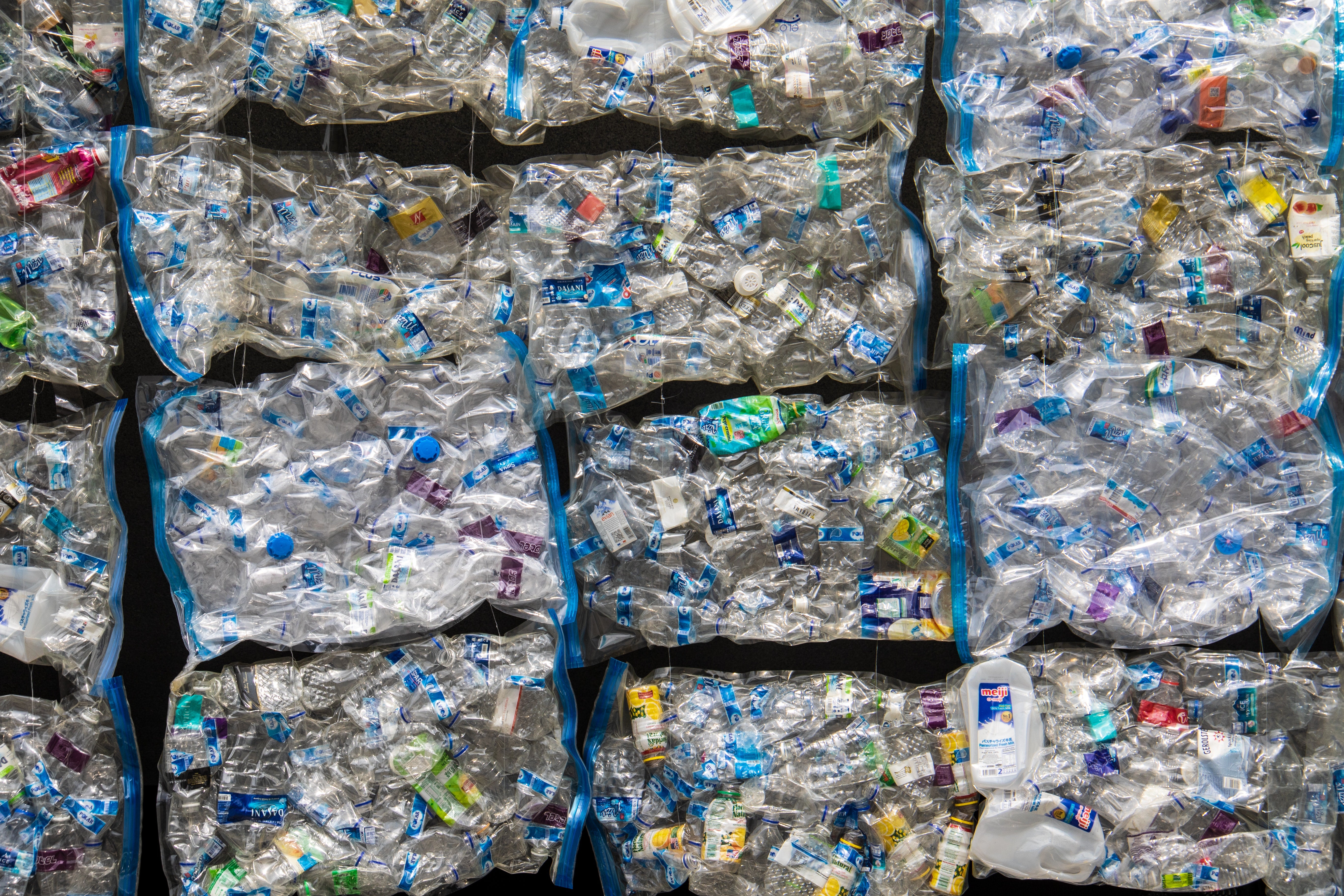
Are your recycled bottles BPA-free?
First of all, what is BPA? And secondly, why do we want to be free of it?
BPA stands for bisphenol A. It is an industrial chemical used to make certain plastics and resins that we often see in products like water bottles, food containers, dental filling sealants, feminine hygiene products, eyeglass lenses, and more. Back in the 1950s, scientists figured out that adding BPA to plastic and metals makes them stronger and more resilient, and who doesn’t want that, right? I mean, we’re all just trying to get our money’s worth from the products we buy, and durability is usually a good thing.
Well, some other scientists eventually realized that not all the BPA mixed into the product gets sealed in completely. They sort of… just hang out on the surface like those loose crumbs on your shirt after eating a flaky croissant. So when consumable liquids and foods are added into these containers, those loose BPA crumbs get mixed in with the contents and ingested by us.
Cue the arrival of even more scientists to the scene who started figuring out that eating something called bisphenol A isn’t even tasty nor recommended for our diet. BPA has been linked to increases in “blood pressure, type 2 diabetes, and cardiovascular disease,” according to Mayo Clinic.
As an alternative, people have created plastic made with PET, aka polyethylene terephthalate. PET offers comparable durability to BPA, but the difference is that PET is approved as safe for contact with foods by the FDA, Health Canada, & EFSA, and other health agencies. Bottles made with PET are marked with a “1” as its recycling symbol. So, during the sorting process at our Taiwan facility, workers carefully filter out which bottles have this symbol and which do not to ensure that all our recycled bottles are definitely BPA-free.
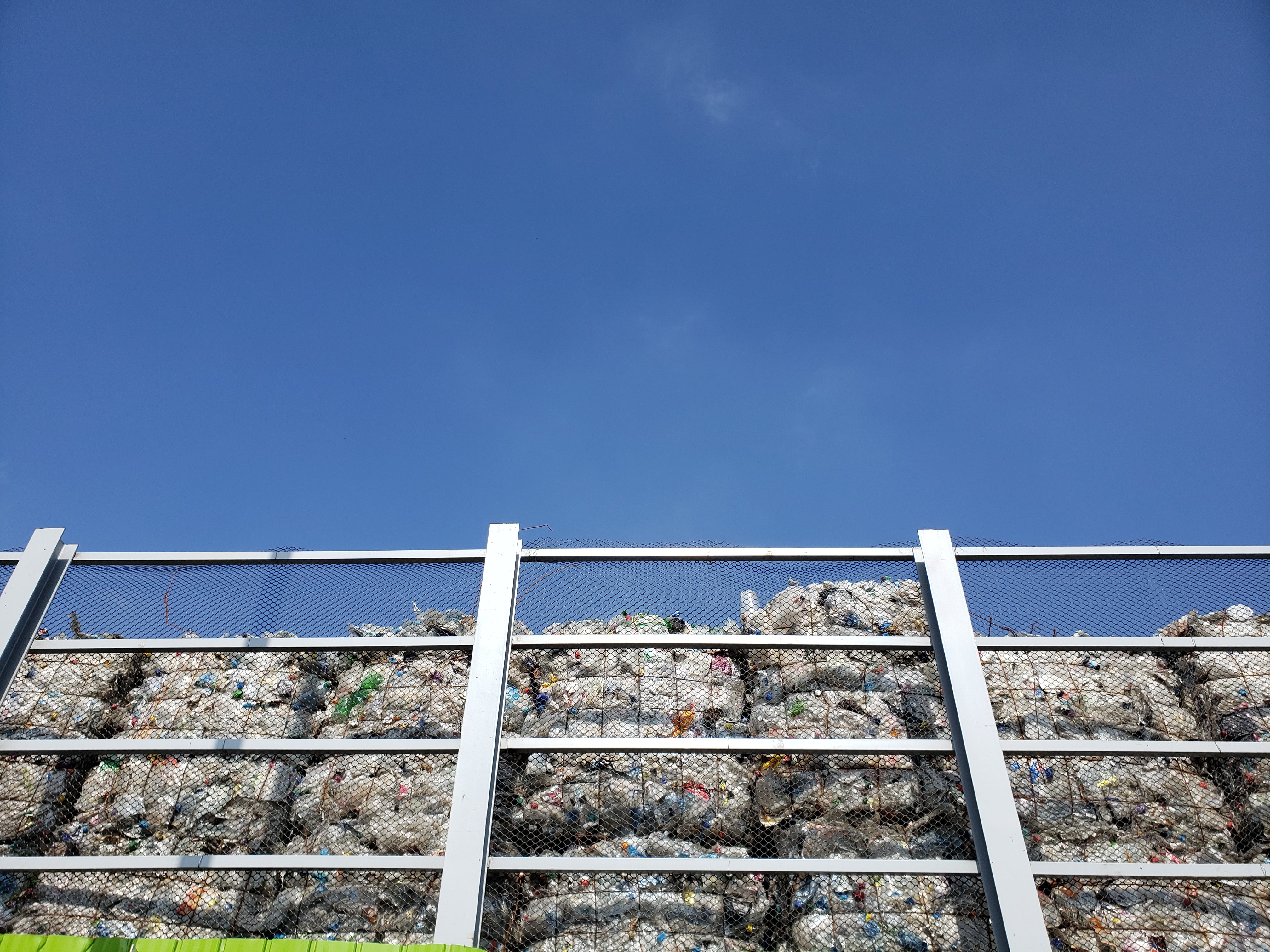
What can we learn from Taiwan?
Taiwan is an exemplary leader for how far we can actually go with sustainability. They used to be called “Garbage Island” due to the sheer amount of waste that they produced. It had gotten so bad that in the mid-1990s, 66% of the island’s landfills were full. Citizens recognized the danger that this was posing to their future, their health, and their community. After many protests and unrest, the government finally agreed that something had to be done. The entire island decided to work together to resolve this issue and began the decades-long journey to becoming one of the world leaders in recycling.
Fast forward to today and Taiwan has consistently managed to recycle 55% of their household waste and 77% of industrial waste. Compare this to the 35% that the US recycles. Taiwan has effectively built one of the world’s most efficient recycling programs, and it is recognized as so. In May 2016, The Wall Street Journal aptly labelled Taiwan as “The World’s Geniuses of Garbage Disposal.” It is quite literally a rags to--well, recycled rags--story.
But what’s captured our attention the most was the way that Taiwan weaved recycling into the fabric of their community. Classical music is played from the recycling trucks to alert citizens to go outside with their bags of recyclables. Neighbors gather outside to deposit their recycled waste together and take the time to catch up and chat about their day. In this way, recycling has become a community ritual rather than a chore.
What about people who aren’t always at home when the trucks come by? They thought about that too. To resolve this issue, Taiwan has also installed convenient smart recycling booths near areas of mass transit so that citizens can bring their recyclables while on their way to work. It doesn’t stop there, though. If you couldn’t get enough of recycling on your own and would like to do more for the community, Taiwan’s recycling centers regularly welcome volunteers to help them sort the recyclables or participate in education programs about waste management and sustainability.
It is truly a marvel to see a community come together like this to achieve what so many people have long considered to be impossible. We immediately knew we had to be a part of it!
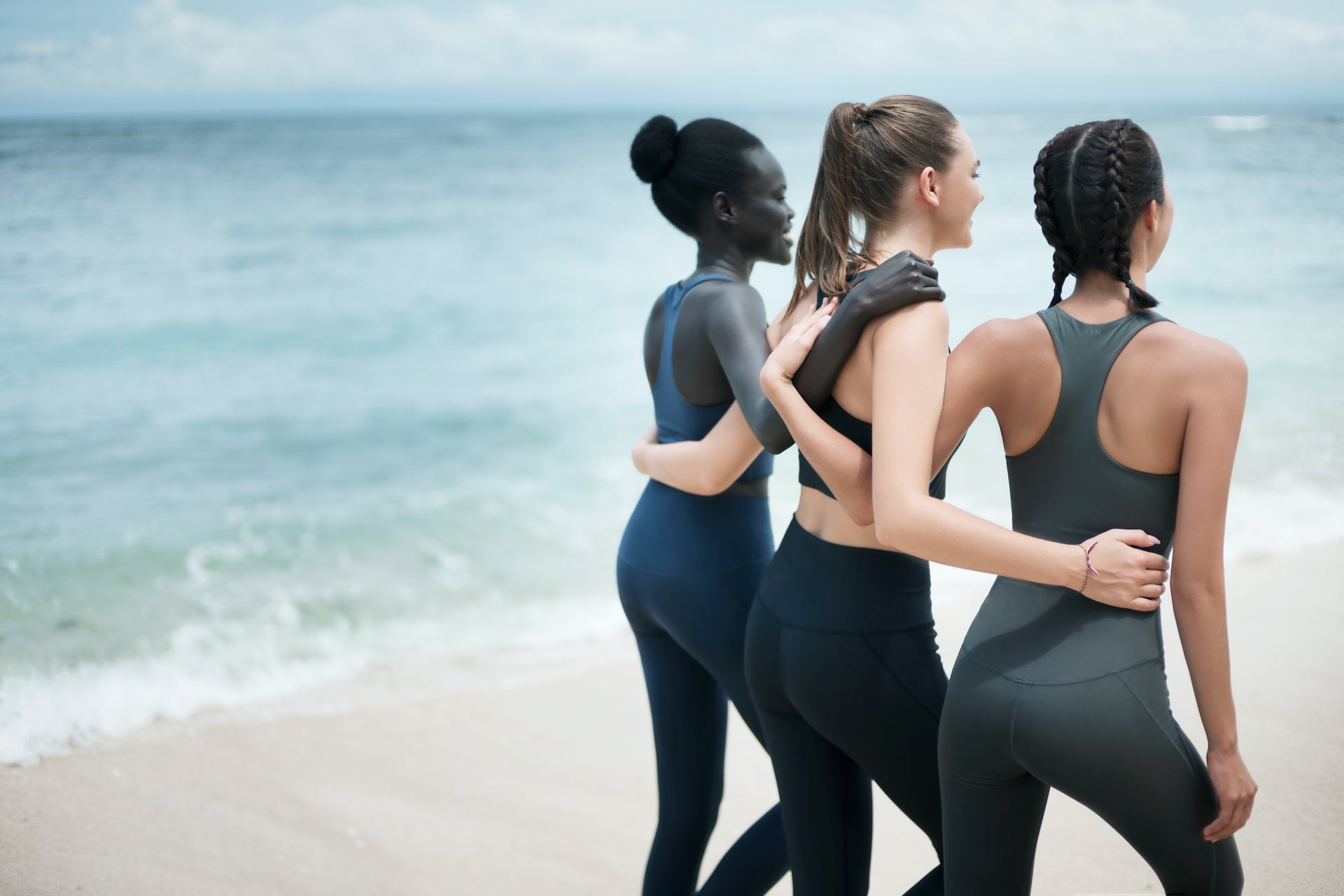
Welcome to the Family
Get this: It takes 28 pairs of hands and eyes making each part of our leggings and 20 hands to make our bras. Woah, that’s quite a handful of people (pun very much intended). These workers—our community—deserve to be cared for.
We wholeheartedly believe that every employee should be treated with respect and paid a fair and living wage. That’s why we only chose to work with a factory that has an SA8000® certification which guarantees that there are absolutely no forced or child labor, safe working conditions, and the right to unionize.
We know from experience that we are nothing without the community that’s willing to stand behind us, and we fully expect to cultivate that shared passion and vision by ensuring that our people’s needs are addressed at every step of the way. We provide both free catered lunch (and dinner for those who work the evening shifts), sports activities with equipment, clean and sanitary working environments, free health check-ups every 12 months at the factory, and health insurance.
As an inspiring young lady once said, “Ohana means family. Family means no one gets left behind or forgotten.” Our employees and customers are our kin & allies, our family and friends. You will always matter to us and we promise to take care of you. So, welcome to the family, we’re so happy you’re here.

